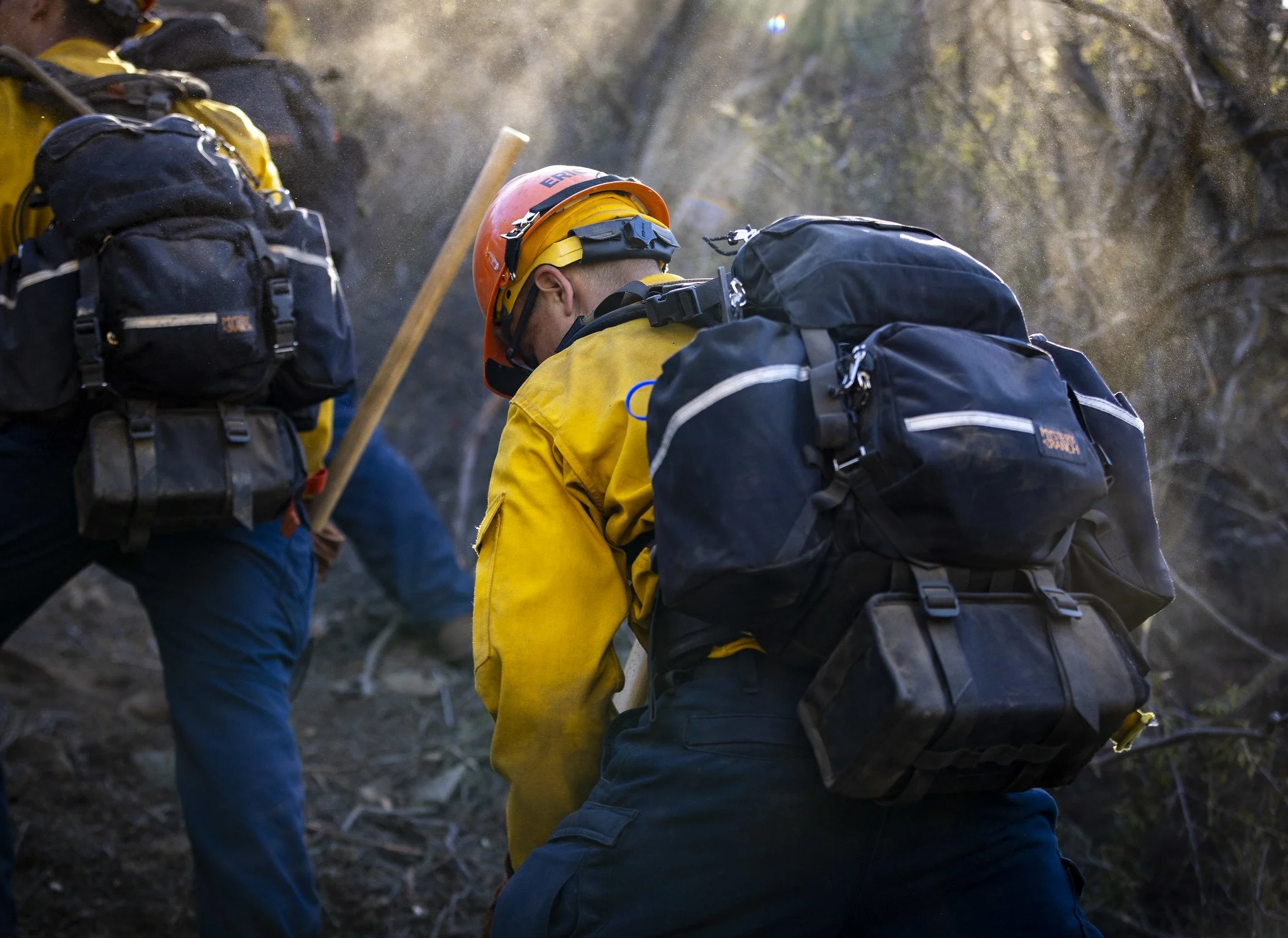Frequently Asked Questions
1. How are the OCFA Handcrews organized?
We are organized into one or two structures. 1-2-2, OR 1-1-3
Both crews work for the Special Operations Division, Wildland Operations Battalion and are organized with the following structures:
1 Superintendent
2 Assistant Superintendents
2 Squad Bosses
20 Handcrew Firefighters
OR
1 Superintendent
1 Assistant Superintendent
3 Squad Bosses
20 Handcrew Firefighters
2. What are the job duties of a Wildland Firefighter that works for OCFA?
Perform hazardous fuels reduction projects
Wildland fire suppression
Camp duties- construction, fabrication, maintenance of equipment used for projects and fire
Physical fitness is the highest priority of an Handcrew Firefighter
HCFF duties on fires may include but are not limited to, direct and indirect line construction, falling operations, firing operations, mop-up, and fire suppression repair.
3. What is the schedule of a Handcrew Firefighter?
OCFA handcrews work 10-hour days (0700-1700) on a modified 4/10 schedule.
Crew 1 works Monday-Wednesday and Payday Weekends
Crew 2 works Wednesday-Friday and Non-Payday Weekends
4. What kind of career progression should I expect as a Handcrew Firefighter?
Handcrew Firefighters are eligible to attend NWCG and California State Fire Training classes at the OCFA. Crew members may open up taskbooks and work on qualifications including but not limited to Firefighter Type 1 and Crew Boss. In the past, crew members have been able to fill trainee positions as fallers, heavy equipment bosses, firing bosses, and helicopter crew members. When the leadership feels that you are ready you will be able to earn a spot as a Senior Firefighter.
5. What is the pay for an entry level Handcrew Firefighter?
$17.63 per hour. Handcrew Firefighters are eligible for pay step increases every 12 months of employment. Pay increases are awarded based on merit and may be given at 1 to 4 step increments. Step 12 is top step at a rate of $23.76 per hour.
6. What type of benefits will I receive as a Handcrew Firefighter?
You will receive medical, dental, vision, safety retirement, and the opportunity to participate in the deferred compensation program. Handcrew Firefighters are considered safety employees who fall under the International Association of Firefighters, Local 3631 as their bargaining unit.
7. What is the process to get hired for the floor as a municipal firefighter with the OCFA?
Crew members must still test with the open Firefighter Trainee recruitment process. This typically includes a written exam, physical ability test, panel interview, and Chief’s interview. Once ranked, the highest scoring candidates move on to a physical screening and background check.
Handcrew Firefighters may participate in the section’s mentorship program to help bridge their experience with crews on the floor. This gives them an opportunity to network with department members, immerse in the OCFA firehouse culture, get exposure to all-risk emergency responses, and prepare for the Firefighter Trainee recruitment exam and academy.
8. Is the move from Handcrew Firefighter to Firefighter Trainee in the OCFA’s academy a promotion?
Although crew members must test as any other applicant on the open test, the move from Full-Time HCFF to Firefighter Trainee is considered a promotion.
Handcrew Firefighters’ accumulated service credits for seniority and retirement carry over when they are hired on as a Firefighter on the floor.
9. How do I physically prepare for the job of Handcrew Firefighter?
When you come to the crew, you should expect to participate in physical training (PT) every day in addition to project work, training, and fire responses. During your initial training you should expect to PT twice a day. Our PT is designed for job function on a handcrew which focuses on long duration moderate load work and aerobic capacity.
Physical training is predominantly alternating days of running and hiking with calisthenics. The runs are usually a moderate pace and most typically last anywhere from 3 to 6 miles. The runs may be on trails with varying terrain. The hikes are usually also a moderate pace and are anywhere from 1 to 2 hours in duration in terrain with varying steepness and footing. Calisthenics include push-ups, pull-ups, sit-ups, squats, lunges, and burpees.
You should also focus greatly on mobility, recovery, nutrition, and hydration.

